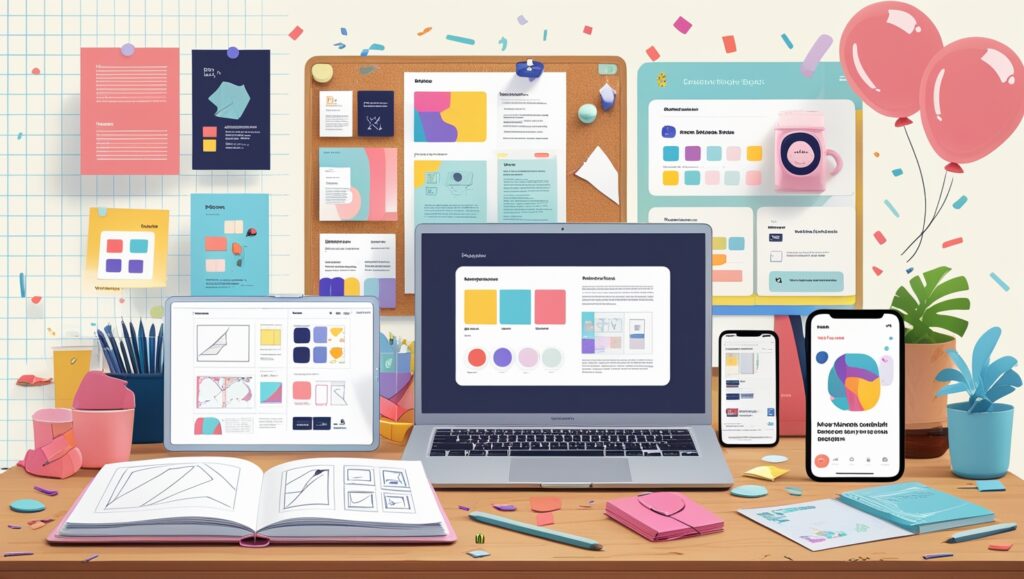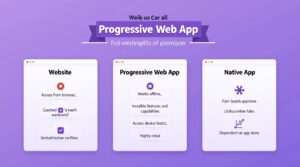click to get service View profile
From Idea to Launch Designing a Successful Design Project involves more than just creativity—it’s a systematic process that transforms an idea into a tangible, impactful outcome. This journey requires thorough planning, research, collaboration, and execution.
Key steps include:
- Ideation and Concept Development: Where raw ideas are shaped into structured plans.
- User-Centric Research: Ensuring designs address the needs and preferences of the target audience.
- Prototyping and Testing: Turning concepts into workable models for evaluation and refinement.
- Execution and Launch: Seamlessly transitioning from design to implementation, ensuring quality and functionality.
From Idea to Launch By blending creativity with strategic thinking, a design project can evolve from a mere concept into a groundbreaking success story Successful Design Project.

Introduction
Successful Design Project Design is at the heart of innovation, shaping how products, services, and experiences are perceived by their users. Yet, taking a design project from an initial idea to a fully realized launch is a complex process requiring creativity, collaboration, and precision. This blog explores the journey of a successful design project, offering practical insights and actionable steps to navigate each stage seamlessly. Whether you are a seasoned designer or a newcomer, these principles can guide you toward creating impactful designs that stand the test of time.
1. Starting with a Strong Foundation: Idea Generation
Brainstorming and Research
From Idea to Launch: Every great Successful Design Project starts with a spark of inspiration. However, turning that spark into a viable idea requires structured brainstorming and thorough research. Leverage techniques such as mind mapping, design thinking workshops, or “How Might We” exercises to explore creative possibilities and set the foundation for success.
Conduct market research to identify gaps, trends, and user pain points. This step is crucial in building a Successful Design Project, as it ensures your design is relevant, user-centric, and effectively solves real-world problems.
Setting Clear Goals
From Idea to Launch: To ensure a Successful Design Project, establish clear objectives from the start. Define the problem you’re solving, the emotions your design should evoke, and key success metrics—whether user engagement, conversion rates, or aesthetic benchmarks. Setting these goals provides direction and keeps your team aligned.
2. Understanding Users: The Key to Success
User Research
Understanding your users is paramount to a Successful Design Project. Conduct surveys, interviews, and observational studies to gain insights into their preferences, behaviors, and challenges. Utilize tools like Google Analytics, Hotjar, or user feedback platforms to analyze existing data and uncover hidden patterns for a more user-centric design.
Personas and User Stories
Turn your research into actionable insights by creating user personas—fictional characters representing your target audience. Pair these personas with user stories that describe how they interact with your design. This approach ensures your Successful Design Project stays user-focused and addresses specific needs throughout development.
3. Crafting the Blueprint: Design and Prototyping
Wireframes and Mockups
Design begins with low-fidelity wireframes that outline the structure and functionality of your project. Tools like Balsamiq or Adobe XD can help you quickly sketch layouts and define user flows. Once you’ve validated these wireframes, move to high-fidelity mockups that incorporate colors, typography, and visual elements, ensuring a Successful Design Project.
Tools and Techniques
Modern design tools like Figma, Sketch, and Canva streamline the creative process. Leverage collaborative features to gather real-time feedback from your team. Additionally, keep accessibility and responsiveness in mind, ensuring your design works seamlessly across devices for a Successful Design Project.
Iterative Prototyping
Prototyping allows you to bring your ideas to life and test them early. Use platforms like InVision or Marvel to create interactive prototypes. Gather feedback from users and stakeholders, and iterate quickly to refine your design. An iterative approach ensures potential issues are addressed before full-scale development, leading to a Successful Design Project.
4. Collaboration is Key: Working with Teams
Cross-Functional Collaboration
No design project is an island. Collaboration between designers, developers, marketers, and other stakeholders is crucial for a Successful Design Project. Schedule regular check-ins to discuss progress, share updates, and address concerns. Establish clear roles and responsibilities to maintain accountability.
Feedback and Refinement
Feedback is the backbone of improvement in a Successful Design Project. Foster a culture of constructive criticism where team members feel comfortable sharing honest input. Utilize collaborative tools like Miro, Slack, or Notion to centralize feedback and ensure alignment throughout the process.
5. Bringing the Design to Life: Development and Launch
Handoff to Developers
A smooth handoff is crucial for a Successful Design Project. Utilize tools like Zeplin or Figma’s developer handoff features to share detailed specifications, assets, and style guides. Maintain open communication to ensure seamless implementation and address any development concerns efficiently.
Testing and Quality Assurance
Thorough testing is non-negotiable. Conduct usability testing to identify and address friction points. Use platforms like BrowserStack to ensure your design performs consistently across browsers and devices. Prioritize accessibility testing to make your design inclusive for all users.
Launch Day and Beyond
A Successful Design Project doesn’t end at launch. Develop a strategic marketing plan to generate excitement and ensure user adoption. Post-launch, monitor analytics to track engagement and performance, using insights to refine and optimize your design for continuous improvement.
6. Lessons Learned: Reflecting on the Process
Conducting a Retrospective
After completing a Successful Design Project, conduct a retrospective meeting with your team to evaluate the process. Discuss successes, challenges, and lessons learned. Document these insights to refine workflows and enhance efficiency in future projects.
Maintaining a Growth Mindset
Every Successful Design Project is a stepping stone in your journey as a designer. Embrace mistakes as learning opportunities and celebrate the achievements that shape your growth and expertise.
Conclusion
From ideation to launch, the journey of a Successful Design Project demands vision, diligence, and collaboration. By following a structured approach and prioritizing user needs, you can turn creative ideas into impactful designs that resonate with audiences. The design process is iterative—each project refines your skills, setting the stage for even greater success in the future.

